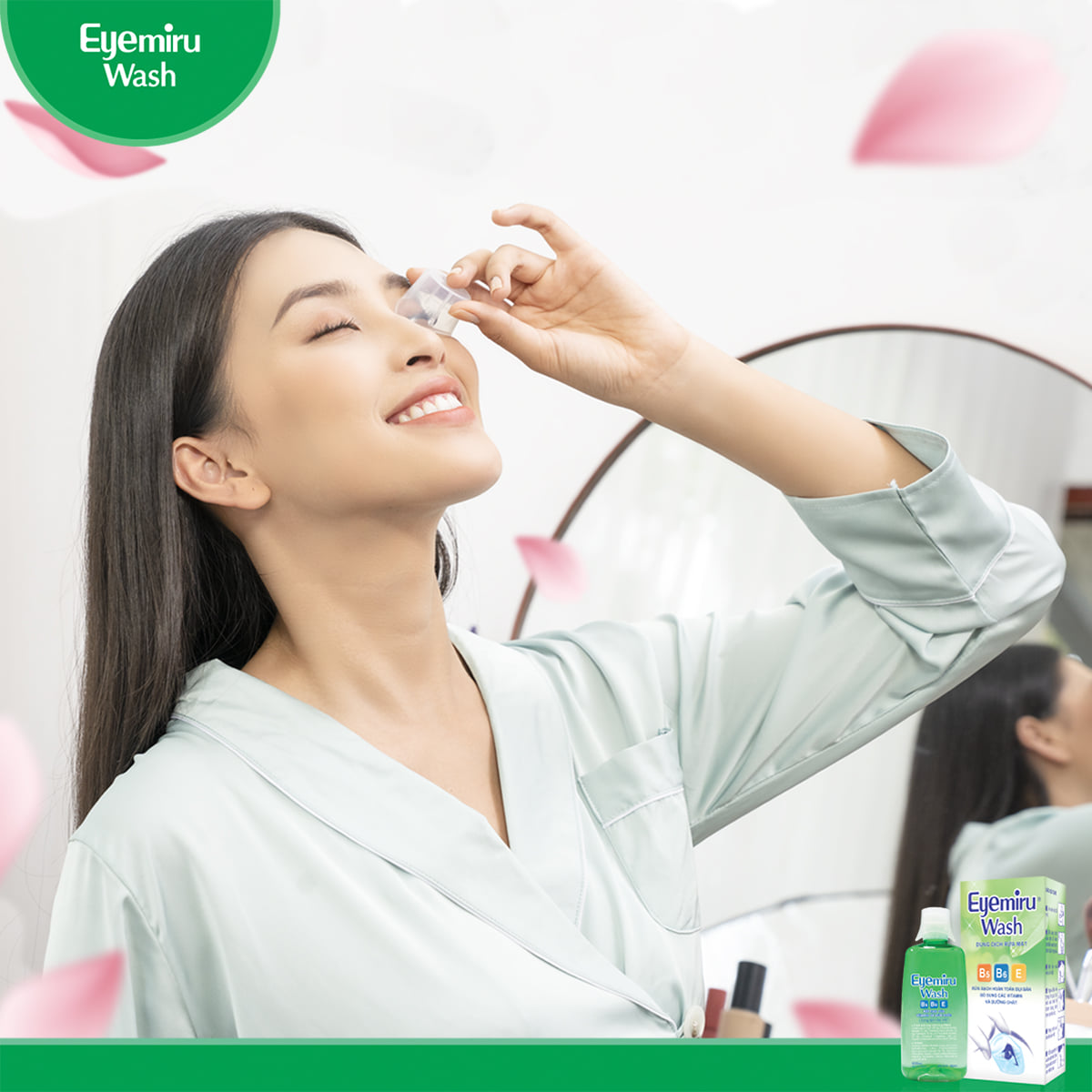
DIAGNOSIS AND TREATMENT OF MYOPIA
23-06-2021Do you find it hard to see distant objects like writing on the blackboard in class but easily read a book up close? You are most likely near-sighted. So the problem is, how to treat myopia?
1. Causes of Myopia
The cause of myopia is that the eyeball axis is too long, causing light rays to focus at a point in front of the retina instead of entering exactly to the retina. That makes us unable to see objects clearly. In addition, the disease can also occur because the cornea or lens is too curved compared to the eyeball. In some cases, myopia occurs due to a combination of the above causes.
Myopia usually begins at an early age, and children whose parents are nearsighted have an increased risk of congenital myopia. Usually, as the person with myopia gets older, the nearsightedness also stops. However, there are still cases that continue to progress with age such as:
-
High myopia: This is a severe form of myopia, in which the eyeballs grow more than normal. Not only make it difficult to see things at a distance, high myopia can also make you more likely to get other conditions like cataracts and glaucoma.
-
Degenerative myopia: also known as pathological myopia and it is inherited. The eyeballs of people with myopia degenerate very quickly and cause severe myopia. Degenerative myopia usually occurs in adolescence and gets worse as you reach adulthood. People with degenerative myopia have a higher risk of retinal detachment, the growth of abnormal blood vessels in the eye, and glaucoma.
2. Diagnosis of myopia
Myopia is diagnosed with a basic eye exam, which includes a refractive evaluation and an eye exam. Usually, the therapist uses different instruments and asks you to look through several lenses to check your distance and near vision.
Moreover, to check the health of your eyes, your doctor will put eye drops in your eyes to dilate your pupils. This can make your eyes more sensitive for several hours after the eye exam is done. The dilation allows the doctor to see a wider view of the inside of your eye.
3. Myopia treatment
The goal of nearsightedness treatment is to improve vision by helping to focus light on your retina through the use of corrective lenses or refractive surgery. Myopia management also includes regular monitoring for complications, including glaucoma, cataracts, lacrimation and retinal detachment, and damage to the central retina.
Myopia can be corrected with refractive surgery, but children under 18 are not old enough to have surgery. Therefore, wearing glasses is the most optimal treatment for nearsightedness.
Some treatments for nearsightedness include:
-
Eyeglasses: This is a simple, safe way to treat nearsightedness and also the most economical solution.
-
Contact lenses: There are many types of contact lenses available in the market with different materials and designs. Consult a contact lens specialist to choose the best one for your eyes
-
Refractive surgery: An eye surgeon uses a laser beam to reshape the cornea. After surgery, you may need to wear eyeglasses for a period of time. Refractive surgery can cause some side effects, you should tell your doctor right away when you have unusual signs.
4. Some home remedies for nearsightedness
Once you become nearsighted, you can't get rid of the symptoms, but you can reduce the impact of myopia on your health and life:
-
Get your eyes checked: Get your eyes checked regularly, even if your eyes don't have any problems.
-
Manage chronic conditions: Certain conditions, such as diabetes and high blood pressure, can affect your vision if you don't get the right treatment.
-
Protect your eyes from the sun: Wear sunglasses to block the harmful effects of ultraviolet (UV) rays on your eyes.
-
Prevent eye injury: Wear protective eyewear when mowing, painting, welding, etc. or using other products with toxic fumes.
-
Eat foods that are good for eye health: Try to eat lots of green vegetables, vegetables and fruits. Increase foods that are high in omega-3 and omega-6 fatty acids like tuna and salmon.
-
Do not smoke: Smoking has negative effects on health, including bad effects on eye health.
-
Use enough light: When you need to read something, make sure your eyes get enough light
-
Reduce eye strain: Apply the 20-20-20 rule when using a computer or reading for a long time - every 20 minutes of work, your eyes need to rest for 20 seconds and see a distance of 20 feet (7 meters).
-
Use artificial tears: Artificial tears can reduce dry eyes and eye strain - the cause of your nearsightedness.
Source: Vinmec
FIND OUT MORE…
EYEMIRU 40EX Eye Drops has ingredients containing Vitamins A, E, B6 and other necessary excipients that not only help soothe eyes immediately, but also reduce eye strain caused by using computers for too long and prevent eye diseases caused by dirt, or dust and sweat entering the eyes. The product is manufactured and packed totally from Japan and applied for the licence by the Vietnam Ministry of Health with Registration Number VN-19227-15.
👉 See more at: https://eyemiru.net.vn/eyemiru-40ex-40
EYEMIRU WASH - EYE WASHING SOLUTION contains Vitamins E, B5, B6 and many other nutrients to clean your eyes deeply and prevent eye diseases caused by dirt or harmful agents or makeup residue sticking on the eyes after going out, after swimming, after removing makeup. EYEMIRU WASH also helps relieve eye fatigue and can be used before bed. The product is manufactured and packed totally from Japan and applied for the licence by the Vietnameses Ministry of Health with Registration Number VN-19492-15.
👉 See more here https://eyemiru.net.vn/eyemiru-wash






